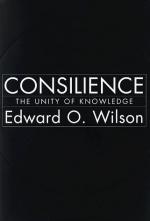
|
| Name: _________________________ | Period: ___________________ |
This test consists of 5 multiple choice questions, 5 short answer questions, and 10 short essay questions.
Multiple Choice Questions
1. What do cultures use from the mind, in Wilson's account?
(a) Science.
(b) Myths.
(c) Humanities.
(d) Narratives.
2. Where does postmodernism fail to accord with science, in Edmund Wilson's account?
(a) In refusing to accept statistical modeling of individual behavior.
(b) In describing the arts as strictly cultural.
(c) In rooting creativity in social behavior.
(d) In describing the brain as chaotic.
3. What does Wilson offer as evidence of cross-cultural epi-genetic rules?
(a) Regional cuisine.
(b) Mating rituals.
(c) Myths.
(d) Councils.
4. What causes a change in traits?
(a) The process of survival that makes a new trait more common.
(b) Mutation of several genes, plus an environmental change.
(c) Mutation of one gene.
(d) Environmental changes that make a trait more desirable.
5. What are effective ethical codes based on?
(a) Scientific laws.
(b) Inherited custom.
(c) Objective knowledge.
(d) Religion.
Short Answer Questions
1. What beneficial uses can incest have in cultures, in Durham's account?
2. Where do tangible phenomena evolve, according to consilience?
3. How does Wilson describe the difference between gifted and less-gifted artists' brains?
4. How, in Edmund Wilson's account, was moral reasoning affected by natural science?
5. What does Edmund Wilson say is the purpose of the social science?
Short Essay Questions
1. What role does the incest taboo have in genetic and cultural development?
2. What ethical perspective does Wilson call the empiricist view?
3. What social science does Wilson credit with coming closest to consilience?
4. What threats to contemporary culture does Wilson describe, and how is consilience useful in answering them?
5. How do social factors influence genetic distribution?
6. How does postmodern art resist consilience, in E.O. Wilson's account?
7. What ethical perspective does Wilson call the Transcendental view?
8. In what way are epi-genetic rules cross-cultural?
9. How do patterns in mental development connect genes to culture?
10. What does Wilson say the liberal arts should address?
|
This section contains 744 words (approx. 3 pages at 300 words per page) |

|




